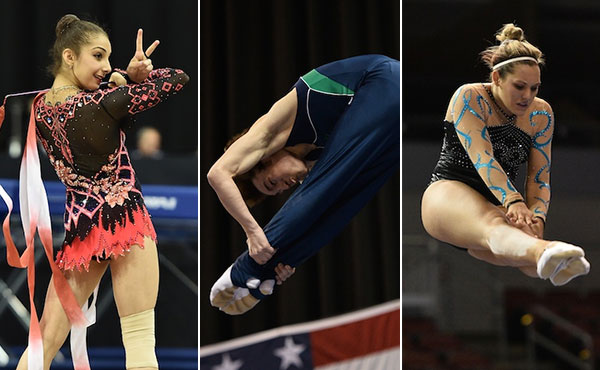
GUADALAJARA, Mexico – Ronit Shamuilov of Brooklyn, N.Y./Isadora, Hunter Brewster of Lafayette, La./Trampoline and Tumbling Express, and Dakota Earnest of Plains, Texas/Acrospirits, each picked up medals at the recent 2014 Pan American Olympic Festival in Guadalajara, Mexico.
Shamuilov represented the United States in the rhythmic gymnastics competition, winning gold medals in ball (15.050), clubs (15.850) and ribbon (14.650). She did not compete in the hoop competition due to minor knee pain, which precluded her from the all-around.
In trampoline, Brewster bounced his way to a silver medal with a score of 54.685, just a point away from gold. Earnest wrapped up the USA’s medal haul with a bronze in women’s trampoline after scoring a 47.945 in the final.
Rhythmic gymnastics is characterized by grace, beauty and elegance combined with dance and acrobatic elements, while working with ribbons, balls, hoops, ropes and clubs in a choreographed routine to music. The choreography must cover the entire floor and contain a balance of jumps, leaps, pivots and balances. Only four of the apparatus are competed each quad, and the four for 2016 are hoop, ball, clubs and ribbon. Each movement involves a high degree of athletic skill. Physical abilities needed by a rhythmic gymnast include strength, power, flexibility, agility, dexterity, endurance and hand-eye coordination.
Trampoline events involve athletes using trampolines that can propel them up to 30 feet in the air, during which they can perform double and triple twisting somersaults. Tumbling utilizes elevated rod-floor runways that enable athletes to jump at heights more than 10 feet and execute a variety of acrobatic maneuvers. For the double-mini competition, the athlete makes a short run, leaps onto a small two-level trampoline, performs an aerial maneuver and dismounts onto a landing mat. Trampoline was added to the Olympic Games in 2000, and at the 2012 Olympic Games in London, the USA had its first athlete in history advance to the finals.




